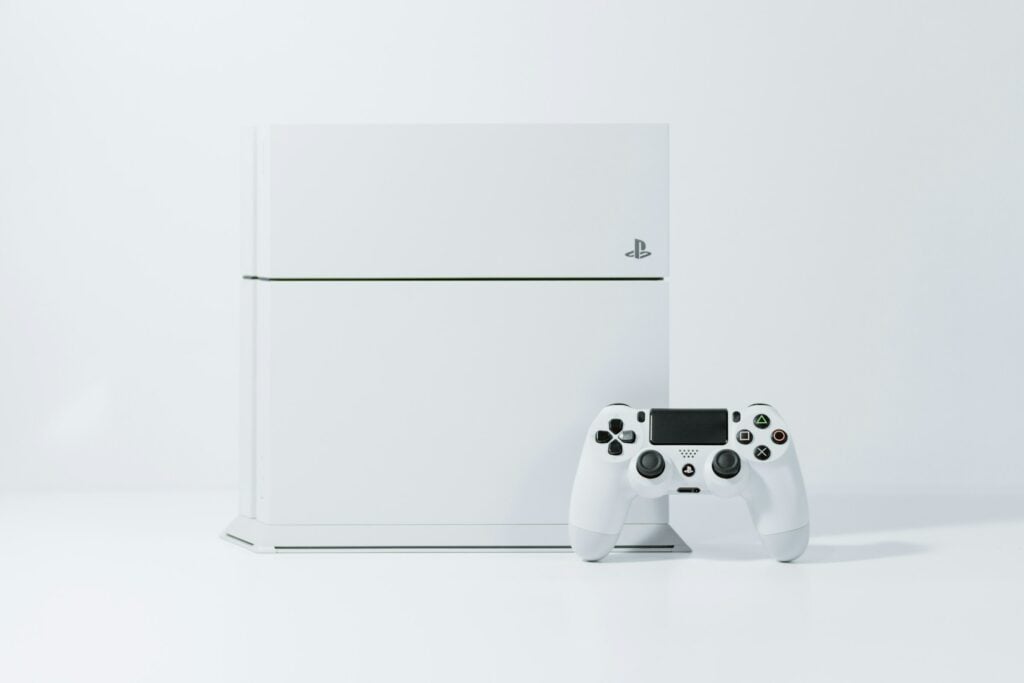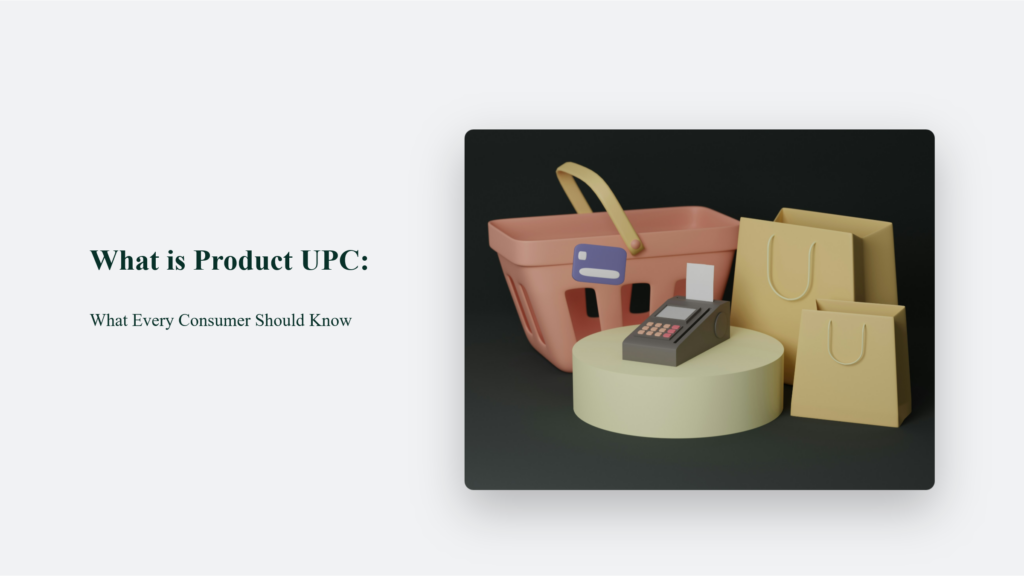

What is Product UPC: What Every Consumer Should Know

As Seen On
In the vast world of consumer goods, a small but mighty code holds the key to unlocking a wealth of information about the products we buy. This unassuming series of numbers and lines has become integral to our daily lives, yet many people remain unaware of its true significance.
This article’ll delve into what is Product UPC and explore how this seemingly simple code plays a crucial role in the modern marketplace.

What is Product UPC?
A product UPC, or Universal Product Code, is a unique 12-digit number assigned to every retail product. This code is represented by a barcode consisting of a series of black and white lines of varying widths. When scanned, the barcode provides essential information about the product, including its manufacturer, item number, and check digit.
The UPC system was first introduced in the United States in the 1970s to streamline the checkout process in grocery stores. By automating the scanning of product information, retailers could reduce human error, speed up transactions, and improve inventory management. The UPC has become a global standard, with millions of products bearing these codes worldwide.
How Does a Product UPC Work?
The 12 digits that comprise a product UPC are divided into four distinct parts, each serving a specific purpose in identifying and processing the item. Let’s look at these components and how they work together to create a functional UPC.
Number System Character (NSC):
The first digit of the UPC, known as the Number System Character (NSC), identifies the type of product being scanned. The most common NSC is “0,” used for standard UPCs found on most retail products. However, other NSCs serve specific purposes:
- “2” is reserved for products sold by weight, such as fruits and vegetables.
- “3” is used for pharmaceuticals and health-related items.
- “4” is assigned to retailer-specific UPCs unique to a particular store or chain.
- “5” is used for coupons.
Manufacturer Code:
The next five digits of the UPC represent the manufacturer of the product. GS1, the global organization responsible for overseeing the UPC system, assigns this code to each manufacturer. GS1 maintains a database of all registered manufacturers and their corresponding codes to ensure each company has a unique identifier.
When a new manufacturer joins the UPC system, they are assigned a specific code based on their location and the type of products they produce. It helps to prevent duplication and ensures that each manufacturer can be easily identified within the system.
Product Code:
The following five digits of the UPC are known as the product code. This code is assigned by the manufacturer and is used to identify the specific product within their inventory. The product code can include information such as the item’s size, colour, style, or other distinguishing characteristics.
Manufacturers can assign product codes in a way that best suits their needs. For example, a clothing manufacturer may use the first two digits of the product code to represent the type of garment (e.g., shirt, pants, dress). The remaining three digits identify the specific style or design.
Check Digit:
The final digit of the UPC is called the check digit. This digit is calculated using a specific algorithm that considers the values of the preceding 11 digits. The purpose of the check digit is to help prevent errors during the scanning process.
When a barcode scanner reads a UPC, it decodes the information contained within the number system character, manufacturer code, and product code. It performs a calculation to verify that the check digit matches the expected value based on the algorithm. If the check digit does not match, the scanner will alert the operator of an error, and the item must be manually entered or rescanned.
The inclusion of the check digit helps to catch common scanning errors, such as digits being transposed or misread by the scanner. This added layer of verification ensures that the correct product information is being processed, reducing the likelihood of pricing discrepancies or inventory inaccuracies.
Putting It All Together
When a barcode scanner reads a product UPC, it quickly decodes the information in these four parts. The scanner first identifies the type of product based on the number system character, then looks up the manufacturer using the manufacturer code. Next, it identifies the specific product within the manufacturer’s inventory using the product code. Finally, it verifies the accuracy of the scan by calculating the check digit and comparing it to the value in the UPC.
This process takes place in seconds, allowing retailers to quickly and accurately identify and process the purchased item. The UPC system has revolutionized the retail industry by streamlining the checkout process, reducing errors, and improving inventory management.
As technology advances, the UPC system has adapted to meet the changing needs of retailers and consumers. Many smartphones now have built-in barcode scanning capabilities, allowing customers to access additional product information, compare prices, or even purchase directly from their devices.

The Benefits of Product UPCs:
The widespread adoption of product UPCs has revolutionized the retail industry, offering numerous benefits to both consumers and businesses:
- Improved Accuracy: By automating the scanning process, UPCs reduce the risk of human error during checkout, ensuring that customers are charged the correct price for their purchases.
- Enhanced Efficiency: UPCs allow for faster and more efficient transactions, reducing wait times at the checkout counter and improving the overall shopping experience.
- Better Inventory Management: By tracking products using their UPCs, retailers can more easily monitor stock levels, identify trends, and make informed decisions about inventory management.
- Increased Product Information: Many retailers now offer smartphone apps that allow customers to scan product UPCs to access additional information, such as nutritional facts, customer reviews, or related products.
Conclusion:
From its humble beginnings in the grocery industry to its current status as a global standard, the product UPC has become an indispensable tool in retail. By understanding what a product UPC is and how it works, consumers can better navigate the modern marketplace and make more informed purchasing decisions. As technology continues to evolve, it’s clear that the UPC will remain a vital component of the retail landscape for years.
Frequently Asked Questions:
Can consumers use UPCs to compare prices between retailers?
Yes, by scanning a product’s UPC using a smartphone app or online tool, consumers can easily compare prices across different retailers to find the best deal.
Are UPCs the same worldwide?
While the UPC system is widely used globally, some countries may have their own variations or additional requirements for product coding.
Can consumers use UPCs to compare prices between retailers?
Yes, by scanning a product’s UPC using a smartphone app or online tool, consumers can easily compare prices across different retailers to find the best deal.
Konger
Up until working with Casey, we had only had poor to mediocre experiences outsourcing work to agencies. Casey & the team at CJ&CO are the exception to the rule.
Communication was beyond great, his understanding of our vision was phenomenal, and instead of needing babysitting like the other agencies we worked with, he was not only completely dependable but also gave us sound suggestions on how to get better results, at the risk of us not needing him for the initial job we requested (absolute gem).
This has truly been the first time we worked with someone outside of our business that quickly grasped our vision, and that I could completely forget about and would still deliver above expectations.
I honestly can't wait to work in many more projects together!
Disclaimer
*The information this blog provides is for general informational purposes only and is not intended as financial or professional advice. The information may not reflect current developments and may be changed or updated without notice. Any opinions expressed on this blog are the author’s own and do not necessarily reflect the views of the author’s employer or any other organization. You should not act or rely on any information contained in this blog without first seeking the advice of a professional. No representation or warranty, express or implied, is made as to the accuracy or completeness of the information contained in this blog. The author and affiliated parties assume no liability for any errors or omissions.

